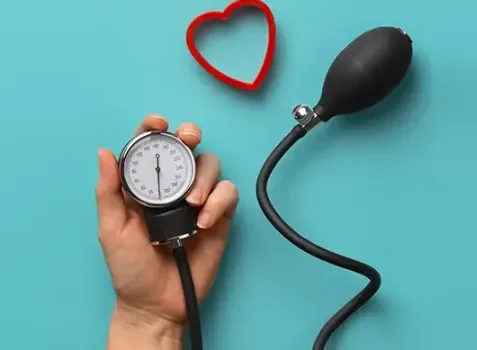
Living with pulmonary hypertension (PH) can make everyday tasks more challenging as the condition causes increased pressure in the pulmonary arteries, affecting the heart’s ability to pump blood efficiently to the lungs. Over time, this can lead to fatigue, shortness of breath, and difficulty managing routine activities. Fortunately, integrating some manageable lifestyle changes can help maintain energy levels and improve overall quality of life.
Conserve Your Energy
Fatigue and breathlessness are common symptoms of pulmonary hypertension. To manage these, it’s crucial to prioritize tasks, break them down into smaller steps, and use energy-saving strategies throughout the day.
Create a Daily To-Do List
Start each day by listing your tasks and ranking them by importance. This helps you focus on what truly needs to be done, while delegating or postponing less critical activities. For example, don’t hesitate to push back housework if your body needs rest.
Take Regular Breaks
Instead of tackling tasks continuously, pace yourself by working in 15-30 minute intervals. Take mandatory seated breaks between tasks to recharge before continuing.
Organize for Efficiency
Observe how you move through frequently used spaces and adjust them to minimize strain. Keep essentials, like kitchen tools and bathroom items, within easy reach. Installing helpful equipment like grab bars or a shower bench can also reduce physical strain.
Accept Help When Offered
Pulmonary hypertension often makes certain activities more difficult, so it’s important to accept assistance from family or friends when needed. Tasks such as cooking, cleaning, or yard work can be managed with the help of others. Don’t feel guilty about asking for support, and consider using online shopping for groceries and medications to avoid carrying heavy bags.
Use Mobility Aids When Necessary
Devices such as wheelchairs, knee scooters, or portable oxygen tanks can help conserve energy by making it easier to get around. These aids allow you to focus on enjoying activities rather than the physical effort of getting from one place to another.
Incorporate Safe Exercise
While rest is important, staying active in a safe, controlled manner can have positive effects on overall health and well-being. With pulmonary hypertension, moderate exercise can improve strength, cardiovascular health, and emotional well-being.
Consult Your Healthcare Provider
Before starting any exercise routine, speak with your doctor to ensure you’re following a safe program tailored to your condition. Overexerting yourself can worsen symptoms, so it’s essential to know your limits.
Focus on Low-Impact Activities
Low-impact exercises like walking in water, recumbent cycling, and gentle yoga are ideal for PH patients. These activities engage the body without overwhelming the heart and lungs. Consider investing in an upright stationary bike to use at home, keeping it close to your oxygen supply if needed.
Monitor Your Breathing and Vital Signs
Practice deep breathing by inhaling through your nose and exhaling through your mouth, as it improves air exchange and keeps your breathing steady. Use a portable pulse oximeter to monitor your oxygen levels during exercise, and stop immediately if you experience dizziness, chest pain, or severe breathlessness.
Strength Training Cautiously
To increase strength, perform light resistance exercises, such as bicep curls or arm raises with one- to five-pound weights. Avoid holding your breath during exertion, as this can reduce oxygen flow to your body.
Stay Connected and Manage Social Life
In addition to exercise and energy management, maintaining social connections and finding balance in your daily activities is important for emotional health.
Socialize Virtually
When leaving the house is difficult, virtual connections can help you stay engaged. Video calls, social media, and live-streamed events can provide companionship and shared experiences without physical exertion.
Pace Social Activities
When attending social gatherings, be mindful of your energy. Take breaks as needed, use mobility aids, and don’t hesitate to leave early if you begin to feel fatigued.
Choose Healthy, Timely Meals
Opt for small, frequent meals with nutrient-dense, anti-inflammatory foods like fruits, vegetables, and whole grains. Foods rich in magnesium, such as spinach and pumpkin seeds, can support pulmonary health. Stay hydrated and avoid excessive sodium, caffeine, and alcohol, which can aggravate symptoms.
Manage Stress Effectively
Chronic stress can worsen symptoms of pulmonary hypertension, so it’s important to find strategies to relax. Practices like yoga, mindfulness, and journaling can reduce anxiety. Laughter, focusing on gratitude, and saying no to non-essential tasks can also help manage stress.
Maintain Open Communication
Educate those around you about your condition so they understand its unpredictability. Let family and friends know that while you may feel fine one day, you might struggle with even simple tasks on another. Open communication helps build support and reduces feelings of isolation.
Listen to Your Body
Above all, pay attention to how your body feels. If you need rest, don’t hesitate to skip optional activities. Pulmonary hypertension is a long-term condition, and pacing yourself is key to managing symptoms effectively and improving your quality of life.
By making these adjustments and embracing a slower pace when needed, you can manage pulmonary hypertension and maintain a fulfilling and active life.












